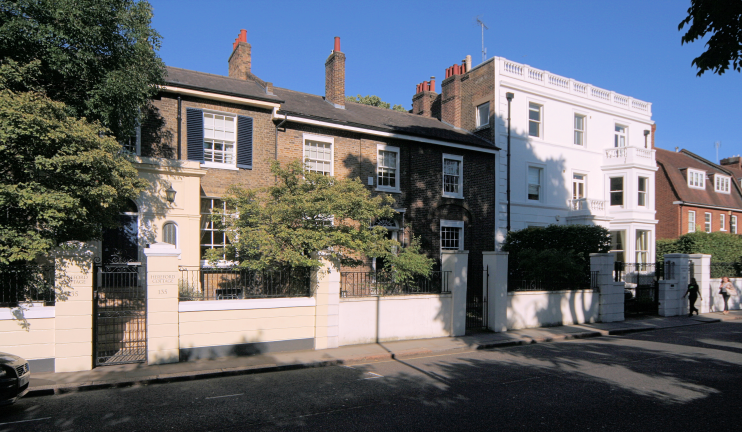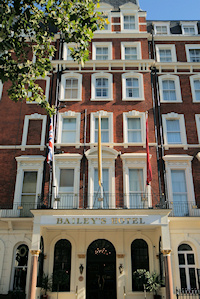MEPO 4/349/154
- George Brooks, warrant number 97540. Joined on 29 Nov 1909, and left on 2 Dec 1934. Last posted to X Division as a PS.
No. 114 Gloucester Road
¶The first house built on the estate was to the south of St. Stephen's Church, No. 114 (formerly No. 74) Gloucester Road, erected for George Berkley, a civil engineer, by Higgs and Hill to the design of the architect H. E. Harwood. Tenders were sought in July 1870, Higgs's being for £4,484, and a ninety-year lease from 1870 was granted in August 1872. (fn. 14) It is a large house of slightly asymmetrical villa form with a stucco front on three storeys. Berkley also took land for building a stable in Lenthall Mews on the north flank of Gloucester Road Station in October 1872. (fn.
15) From 1875 Edward James Reed, naval engineer and M.P., lived here in succession to Berkley.
(fn. 16)Before the success of Barrie’s Peter Pan play he enjoyed another stage sensation in London and New York with a play called Quality Street. And yes, they did name the famous tins of chocolates after the play. More of that later, but first, a sort of apology. I was a bit unkind to Barrie’s creation Peter Pan in this post last year. The problem was that Arthur Rackham’s illustrations for Peter Pan in Kensington Gardens are very much better than the text itself.
The apology to Barrie is due because unfortunately the same is true of Quality Street. Hugh Thomson’s illustrations are much more enjoyable than the actual story.
During the course of collecting the images for this post I read most of Quality Street and while I still hold to the view that the pictures are the most interesting thing about it, I did warm to some of the dialogue after a while (although the story is still quite silly and Barrie’s stage directions sound like he’s writing a DVD commentary). If I had been around in London at the time I might have gone to see it, as many others did. It was a good boost to Barrie’s career.
Quality Street was an innovative product first sold in 1936. The company invented a device to wrap the sweets in coloured paper and conceived the idea of putting them into a tin . This made the product cheaper than boxes of chocolates with individally wrapped sweets. Harold Mackintosh combined aspiration with nostalgia by naming his product after the play. Some readers may remember that the tins used to feature a pair of characters know in the trade as Miss Sweetly and Major Quality who were always depicted in a vaguely Regency / mid-Victorian setting probably suggested by Thomson’s pictures. As I recall there were TV commercials featuring the two as well, especially at Christmas where they merged with the general 19th century Dickensian season of bonnets and crinolines.
.The recent post about Hugh Thomson’s illustrations to J M Barrie’s play Quality Street attracted quite a bit of attention in an otherwise quiet month so I was happy to take up an offer to do the same with Barrie’s other play of 1901/02, The Admirable Crichton. This was one I had heard of, thanks to the 1957 film version starring Kenneth More, seen many years ago on one of those Sunday afternoons of childhood when you’d watch anything that was on. The final scene has remained in my memory, but no spoilers yet.
1901 had been a good year for Barrie. Quality Street opened in New York and he finished Crichton while he was attending rehearsals for Quality Street. Within a short space of time he had two plays on the London stage. He and his wife were in the process of moving out of their Gloucester Road house to another house in Leinster Gardens, Bayswater which was close to Kensington Gardens, a favourite haunt of both of them.
Crichton is an odd sort of story. It was described as “a fantasy in four acts” but it is also a satire or maybr even some kind of parable about the rigidly stratified structure of Edwardian society. It begins with a portrait of an aristocratic household with the mildly eccentric Lord Loam, his three daughters and Crichton the butler a man who knows his place and wishes everyone else would stay in theirs
Camden town
.













































































Comments
Post a Comment